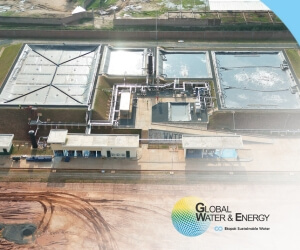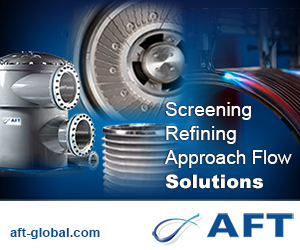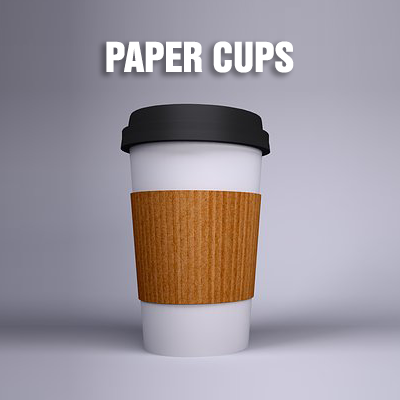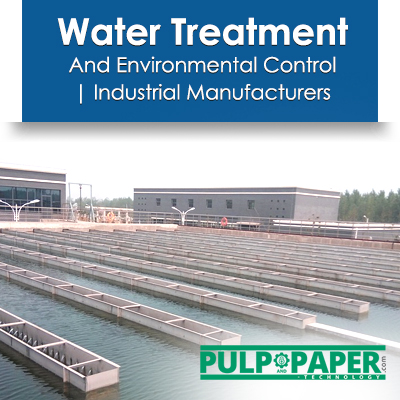Next-Gen Paper Recycling Technologies: Advancements towards a Closed-Loop Circular Economy
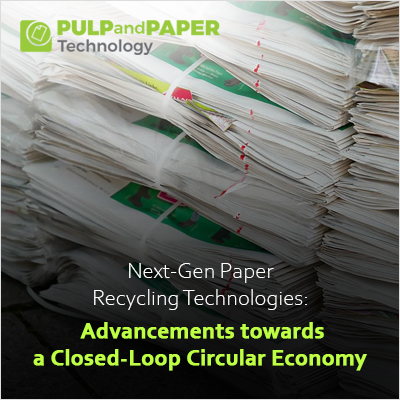
Amidst the drive for sustainability in the paper industry, a significant transformation is underway in recycling technologies. This article explores the recent breakthroughs in paper recycling, emphasizing advancements in de-inking processes, strategies for waste reduction, and the adoption of a circular economy model to create a self-sustaining closed-loop system.
Advanced De-Inking Processes
Cutting-edge de-inking technologies are revolutionizing the efficiency and sustainability of the process. Enzymes, such as lipases and cellulases, serve as biological catalysts, breaking down ink particles and providing an eco-friendly solution. Surfactants play a crucial role by enhancing ink dispersal, preventing reattachment to fibers, and introducing a more sustainable approach. Innovative separation methods, like air classification and magnetic separation, offer precise ink removal. The integration of multi-stage de-inking systems and advances in flotation de-inking further contribute to higher-quality recycled fibers. Real-time monitoring systems with sensors and analytics optimize the process, minimizing fiber loss. Beyond efficiency, these advancements align with sustainability goals by reducing water consumption, improving energy efficiency, and lowering chemical usage in the paper recycling industry.
Waste Reduction Techniques in Paper Recycling
Waste reduction techniques are pivotal for enhancing efficiency and sustainability. This article explores innovative strategies aimed at minimizing waste throughout the paper recycling process. Advanced screening, cleaning, and refining processes are key components in reducing rejects and promoting a more resource-efficient and economically viable recycling system. By delving into these waste reduction techniques, the paper industry can move towards a more sustainable future, aligning with environmental goals and ensuring a responsible approach to resource utilization.
Circular Economy and Paper Recycling
Embracing a circular economy approach is paramount in reshaping the landscape of paper recycling. This article delves into how the paper industry is evolving towards a closed-loop system, where recycled paper becomes a foundational element for creating new products. By exploring this circular economy model, which minimizes waste and maximizes the reuse of resources, the paper industry not only addresses environmental concerns but also establishes a sustainable and regenerative framework. The discussion includes insights into how companies are integrating circular practices, fostering collaboration across the supply chain, and contributing to a more resilient and environmentally conscious future for paper recycling.
Smart Technologies in Recycling Plants
The integration of smart technologies in paper recycling plants is driving a transformative shift in the industry. This article explores how sensors, artificial intelligence, and data analytics are enhancing operational efficiency and quality control in recycling facilities. Smart technologies optimize sorting processes, track the quality of recycled fibers in real time, and contribute to a more streamlined and effective paper recycling process. By delving into these technological advancements, the paper industry can not only improve its overall productivity but also pave the way for a sustainable and digitally optimized future, aligning with the demands of a modern and environmentally conscious world.
Alternative Fiber Sources for Sustainable Recycling
Delving into alternative fiber sources is crucial for promoting sustainability in the realm of paper recycling. This article explores the use of unconventional materials such as agricultural residues and non-wood fibers, aiming to establish a more environmentally friendly and diverse supply chain. By analyzing the advantages and obstacles linked to these alternative sources, the paper industry can minimize environmental impact, lessen reliance on traditional wood pulp, and progress towards a circular and sustainable model for paper recycling. The discourse seeks to illuminate the transformative possibilities presented by alternative fiber sources in shaping the upcoming landscape of environmentally conscious paper production.
Industry Collaboration and Innovation
Central to advancing the paper recycling sector towards a more sustainable and efficient future is the pivotal role of industry collaboration and innovation. This article delves into the ways collaborative endeavors among manufacturers, recyclers, and technology developers propel innovation within the paper industry. Through spotlighting successful partnerships and initiatives, readers are provided insights into how the pooling of expertise and resources contributes to the creation and adoption of state-of-the-art technologies. The discussion encapsulates the collaborative spirit necessary for addressing shared challenges, expediting the integration of sustainable practices, and nurturing a culture of ongoing improvement within the paper recycling ecosystem.
Regulatory Landscape and Incentives
Navigating the regulatory landscape and incentives is crucial for shaping the trajectory of paper recycling toward sustainability. This article examines the evolving regulatory frameworks impacting the paper industry, encompassing environmental standards, product certifications, and waste management policies. By exploring how regulations influence business practices, the discussion sheds light on the industry's commitment to compliance and its role in achieving broader environmental goals. Additionally, the article delves into the incentives and support mechanisms provided by governments and regulatory bodies, showcasing how these initiatives encourage the adoption of sustainable practices and investments in advanced technologies within the paper recycling sector.
Conclusion
In conclusion, the landscape of pulp and paper technology is undergoing a profound transformation, driven by innovation, sustainability, and collaborative efforts. From advanced de-inking processes that enhance the quality of recycled fibers to waste reduction techniques, circular economy approaches, smart technologies in recycling plants, and the integration of alternative fiber sources, the industry is evolving to meet the demands of a more environmentally conscious and technologically advanced era.
The journey towards a closed-loop system, as explored through circular economy practices, signifies a commitment to minimizing waste and maximizing resource efficiency. Smart technologies are optimizing operations, ensuring real-time monitoring, and contributing to a streamlined and sustainable future for paper recycling plants.
Moreover, the embrace of alternative fiber sources not only diversifies the raw material base but also aligns the industry with principles of sustainability, reducing environmental impact and promoting a circular supply chain. The collaborative spirit within the industry, as highlighted through partnerships and innovation, further accelerates progress and fosters a culture of continuous improvement.
As we navigate the regulatory landscape and incentives, it becomes evident that compliance with environmental standards and the pursuit of sustainable practices are integral to the industry's evolution. Governments and regulatory bodies provide incentives that encourage the adoption of responsible and environmentally friendly technologies, driving positive change.
In essence, the collective efforts and advancements discussed in these articles underscore the paper industry's commitment to a future where recycling is not just a process but a cornerstone of a sustainable and circular economy. Through embracing cutting-edge technologies, fostering collaboration, and adhering to evolving regulations, the pulp and paper industry is poised for a greener, more efficient, and environmentally responsible future.


